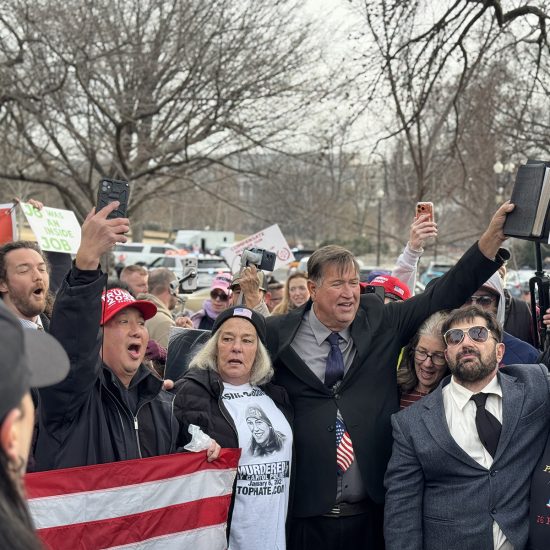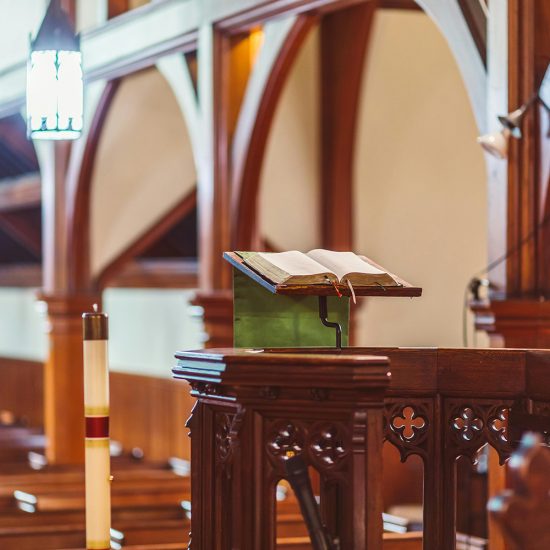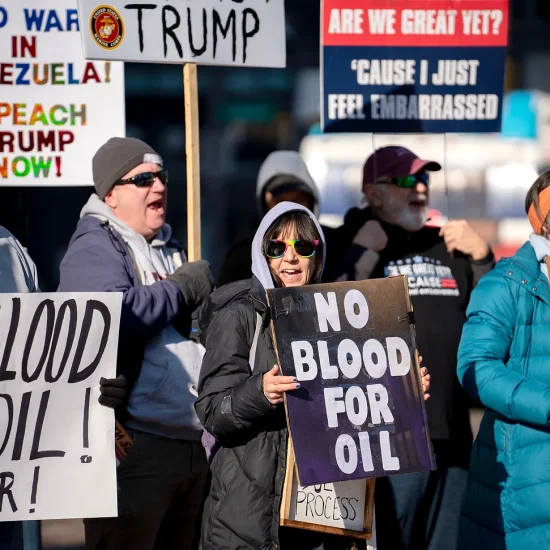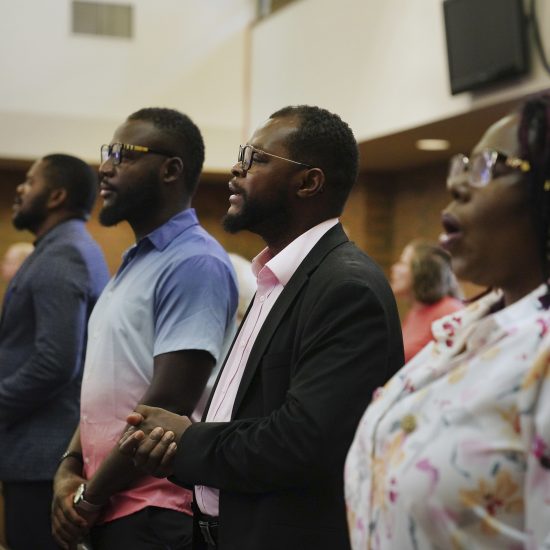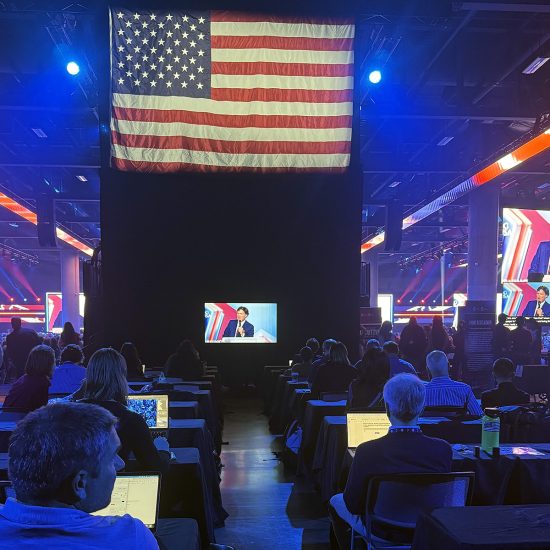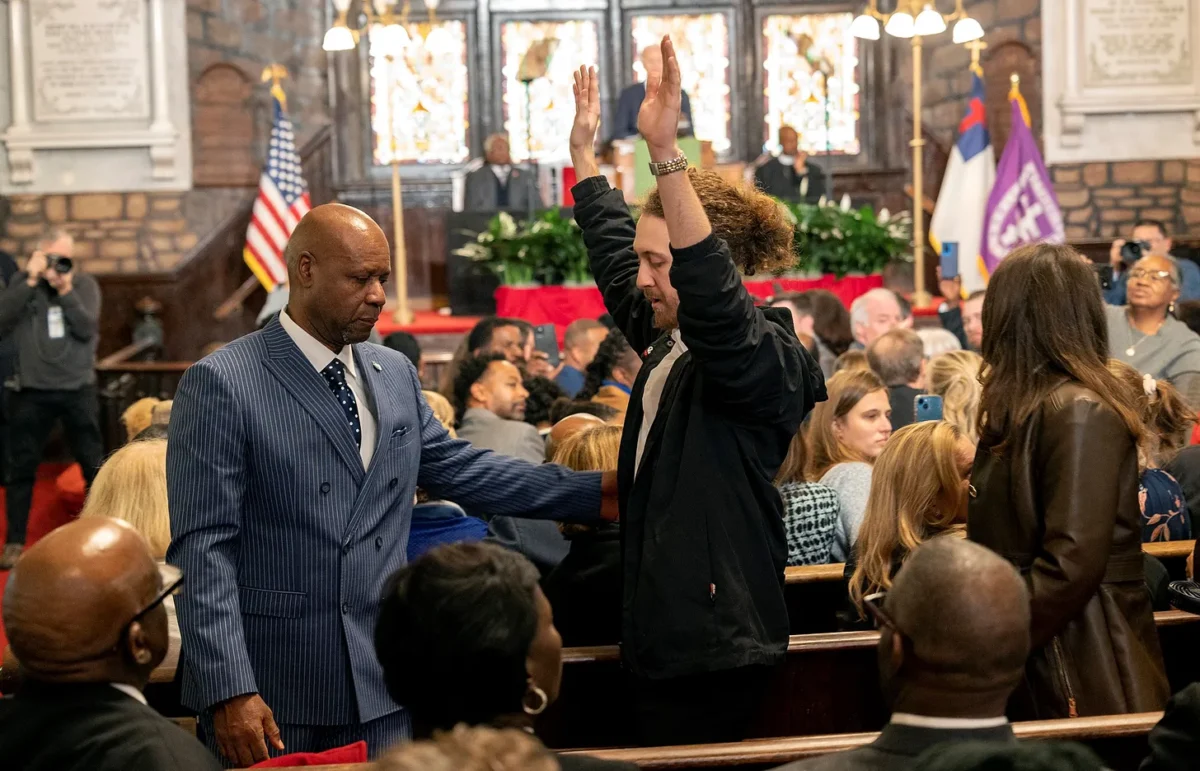
During worship Sunday (March 3) at Ebenezer Baptist Church in Atlanta, Georgia, Rev. Raphael Warnock read from Luke 22 as the passage for his sermon. The senior pastor at the famed church whose previous ministers include Martin Luther King Sr. and Martin Luther King Jr., Warnock is also a U.S. senator. Thus, his messages sometimes spark attention. But Sunday was different.
After reading the scriptural passage and announcing the title of his sermon — “A Seat at the Table” — Warnock started his sermon. At that moment, nearly two dozen students from local Historically Black Colleges and Universities stood up and removed their jackets to reveal shirts calling for a “permanent ceasefire” in Gaza and urging the U.S. to “stop arming Israel.” As Warnock talked about the U.S.’s inhumane death penalty system, the students quietly left their pews one at a time and walked out of the church. Warnock haltingly continued his sermon while glancing occasionally at the movement in the pews and center aisle.
“I want to thank God for the students and the young folk who are here,” Warnock suddenly said as he gestured toward the last remaining students walking out. “I wish they’d hang out so we can talk after church. Let them know they’re welcome to stay. Let’s talk after church.”
Warnock then continued with his sermon, though it was unclear if he knew at the moment what their grievance was or if he met with them afterward (the church did not respond to my request for comment, and his senate office said it was a matter for the church to address). But as he preached, he talked about the importance of siding with the marginalized and those condemned to die.
“We ought to recognize that our Jesus, that our Christ always sits with folk who are crucified, always sits with the most marginalized members of the human family,” he proclaimed. “To walk with Jesus is to walk with those who are on the underside.”
For the students who silently protested, Warnock hasn’t sufficiently practiced what he preaches in working to stop genocide in Gaza. As they explained about their effort, “The Black church was born fighting for freedom, and now we’re demanding Rev. Warnock do the same for Palestine.”

Screengrab as demonstrators silently stand at the start of Rev. Raphael Warnock’s sermon on March 3, 2024, at Ebenezer Baptist Church in Atlanta, Georgia.
Three days before the sermon protest, Warnock had walked to the Senate floor to urge a temporary ceasefire. In his Senate remarks, he quoted Martin Luther King Jr., talked about being “a Black man who stands in Dr. King’s pulpit,” and quoted the prophetic vision of peace in Isaiah 11:6 about the wolf living with the lamb and the calf with the lion. But in that speech he also continued to call for the U.S. to provide billions more in military funding to Israel. So the students showed up to protest as he stood in King’s pulpit.
Another protest last weekend targeted a church in Texas. The previous Sunday, Rev. Ed Young Sr., a former president of the Southern Baptist Convention, had declared during his sermon at Second Baptist Church in Houston that migrants coming from Mexico are “undesirables” and “garbage.” So a local advocacy group projected the words “Jesus was a migrant” on the side of the church at night next to the church’s “welcome” sign and U.S., Texas, and Christian flags. The visual protest didn’t occur during a service — since such projections show up better at night — but the group shared images online and with local media to make sure Young and others would see it.
“Immigrants are welcome here,” the group wrote online. “Ed Young’s hate isn’t.”
Although different in approach, message, and timing, the two protest both targeted a holy space. The efforts therefore provoked some criticism, especially in the Atlanta case since it occurred during Sunday worship. Yet, King’s civil rights movement even employed such a strategy. Attempts to desegregate churches didn’t receive as much attention as similar moments at Woolworth’s lunch counters or on Greyhound buses, so this issue of A Public Witness looks back at the “kneel-ins” of the civil rights movement to consider recent protests at prominent churches.
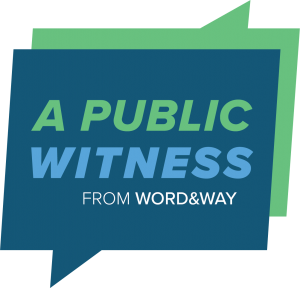
The rest of this piece is only available to paid subscribers of the Word&Way e-newsletter A Public Witness. Subscribe today to read this essay and all previous issues, and receive future ones in your inbox.

